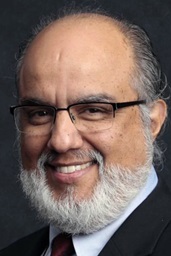If you live in the New York-New Jersey region, it’s easy to see that more than two months later, the recovery from Hurricane Sandy has barely begun.
The news media has done an excellent job in documenting the storm’s impact, the human struggles and the challenges ahead. Some of the facts are just hard to believe:
- In the Jersey Shore town of Sea Bright, population 1,412, 100 percent of the businesses were lost and 75 percent of the homes remained uninhabitable in early January, Mayor Dina Long told NPR.
- In the Far Rockaways, Queens, N.Y., thousands still reportedly were living without heat, hot water, electricity and “effective public assistance” after the new year, according to the Jewish Voice.
- On Long Island, more than 95,534 buildings were damaged or destroyed by Sandy, resulting in 4.4 million cubic yards of debris, as reported in the latest FEMA statistics.
Sandy’s impact on the region’s psyche has affected even those of us who suffered no personal loss. That’s one of the reasons why the refusal by the House of Representatives to take up the entire federal aid package as the new year began provoked such outrage.
By the end of December, 258,985 New Yorkers had registered with FEMA for Sandy relief. Of that number, 108,000 had been approved for some sort of assistance, with 3,386 receiving the maximum grants available, said Tom Hazelwood, who heads U.S. disaster response for the United Methodist Committee on Relief.
But federal assistance is not enough nor does it reach all disaster survivors, as we in the church know all too well.
That’s why Hazelwood has been a bit worried. At the end of December, UMCOR had only received $2.6 million on donations. “It’s certainly less than we have hoped for,” he told me. With more grant requests expected from New York, New Jersey and the Peninsula-Delaware conferences, “we need far more than we’ve got.”
However, he’s upbeat about a resurgence in donations now that the holidays are over. Hazelwood’s experience has shown him that this type of giving drops significantly when Black Friday ushers in the Christmas shopping season.
Money raised through UMCOR and distributed through the annual conferences helps people like 87-year-old Henry Enders, a member of Freeport United Methodist Church on Long Island.
Enders evacuated before Sandy, but his property was five feet under before the hurricane passed through. His house has been gutted, but he has taken strength from Christ and from the church volunteers who came to help. “I anticipate I’m going to get it all back together,” he said optimistically. “It’s going to take a while.”
The Rev. Art McClanahan, who interviewed Enders in December, is now director of communications for the Iowa Conference, but he previously served as a pastor in New York and Connecticut and was eager to show United Methodists outside the area the extent of the damage from Sandy.
He’d had his own experience with flooding in Iowa in 2008, but was struck by how New York’s population density has both compounded and intensified the need. “There’s probably more population in a couple of apartment buildings in the Far Rockaways than there are in most Iowa cities,” he pointed out.
McClanahan told me he had a sense before he arrived that the damage from Sandy would be “fairly catastrophic,” but he also was struck by the variety of communities that were flooded and how the impact on each community was different.
In some cases, the damage would not be immediately visible to the casual observer. Much debris had been removed in Long Island, he noted, so “you drive down the streets and everybody looks like they’re OK.”
Inside some of those homes, life is far from OK. A grandma, mom and infant may be living on the upper level of a raised ranch, he said, with no heat or hot water and a gutted first floor.
As McClanahan’s videos demonstrate, the need is great for all those affected by Sandy — including those in New Jersey and Maryland. The need is twofold: money for the overall recovery effort and volunteer teams to strip damaged homes and help with rebuilding.
Please donate to the church’s Sandy recovery efforts and check out the volunteer opportunities.
Like what you're reading? Support the ministry of UM News! Your support ensures the latest denominational news, dynamic stories and informative articles will continue to connect our global community. Make a tax-deductible donation at ResourceUMC.org/GiveUMCom.



